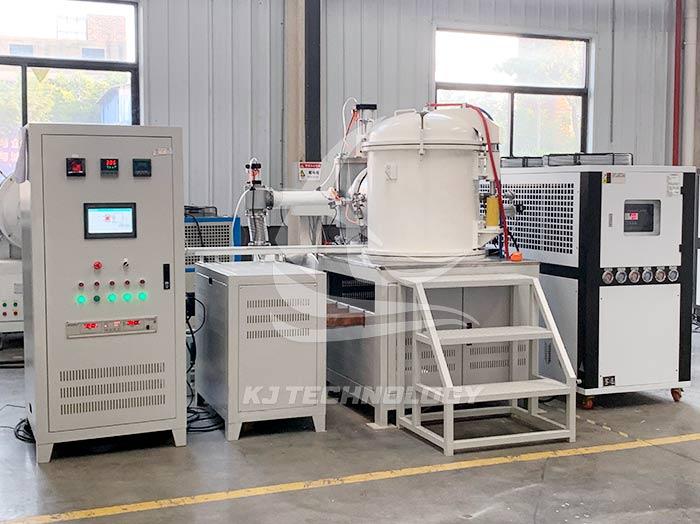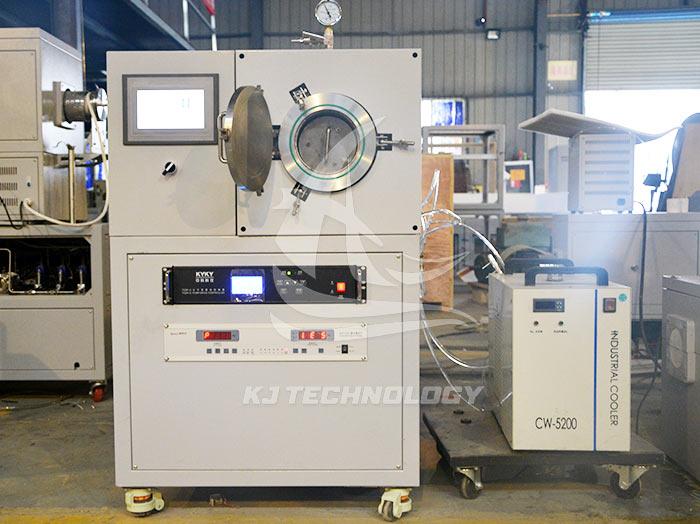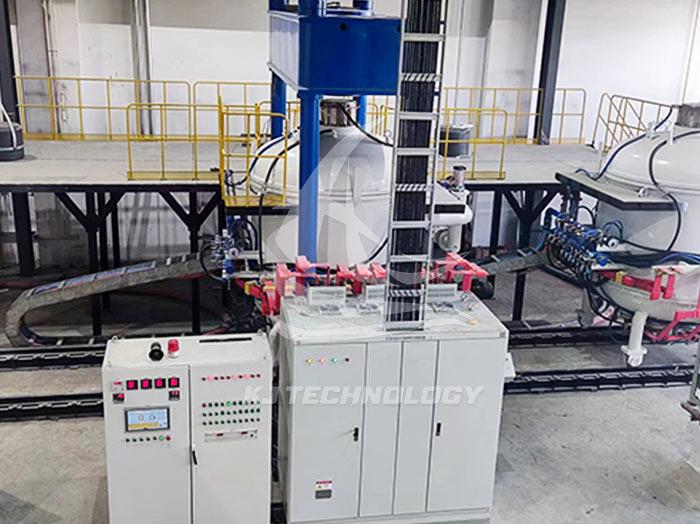Daily maintenance of vacuum muffle furnace
 08-04-2025 Author: KJ technology
08-04-2025 Author: KJ technology
As a precision equipment in high-temperature vacuum environment, the daily maintenance of vacuum muffle furnace is directly related to the stability of equipment performance, service life, and experimental/production safety. The following outlines the key points of daily maintenance from six aspects: cleaning and maintenance, sealing system inspection, vacuum system maintenance, heating system maintenance, control system calibration, and safety protection:
1. Cleaning and maintenance: prevent pollution and corrosion
Internal cleaning of furnace
Frequency: After each use or once a week (high-frequency usage scenarios).
method:
After the furnace has cooled to room temperature, use a soft bristled brush or vacuum cleaner to remove residues (such as oxides and carbides).
For stubborn stains, wipe with anhydrous ethanol or acetone and avoid using chlorine containing solvents (which may corrode the inner wall of the furnace).
Regularly check whether there are cracks or peeling on the inner wall of the furnace. If found, stop using it immediately and contact for maintenance.
Cleaning of furnace doors and observation windows
Frequency: After each use.
method:
Wipe the sealing surface of the furnace door with a soft cloth to remove oil stains or particles (to prevent seal failure).
Wipe the observation window with ethanol to avoid scratches (which may affect the clarity of the line of sight at high temperatures).
Attention: Do not use hard objects to scrape, in order to avoid damaging the sealing surface or observation window.
2. Sealing system inspection: Ensure stable vacuum degree
Sealing ring/gasket inspection
Frequency: Once a month or after disassembling and assembling the furnace body.
method:
Check for cracks, deformation, or permanent compression in the O-ring and flange gasket (if the thickness of the silicone gasket decreases by ≥ 20%, it needs to be replaced).
Clean the sealing surface and apply specialized vacuum grease (such as Apiezon L or Dow Corning 705) to ensure uniformity without bubbles.
Debugging of furnace door locking mechanism
Frequency: Once every quarter.
method:
Check if the locking bolt is loose and tighten it with a torque wrench according to the instructions (e.g. M8 bolt torque is 20-25N · m).
Test whether the furnace door is flat after closing, and adjust the hinge position if there is any tilt.
3. Vacuum system maintenance: maintain pumping efficiency
Vacuum pump maintenance
Oil level check:
Frequency: once a week (rotary vane pump) or once a month (molecular pump).
Method: Observe the oil level in the oil window. If it is below the lower limit (usually at 1/3 of the oil window), special vacuum pump oil (such as Fomblin Y or Ultra Grade 19) should be added.
Oil change cycle:
Frequency: Every 500 hours or every 3 months (whichever comes first).
Method: Drain the old oil, rinse the pump body with new oil 2-3 times, and then add new oil to 2/3 of the oil window.
Vacuum gauge cleaning
Frequency: Once every six months or when the vacuum level is abnormal.
method:
After cutting off the power, disassemble the regulator and wipe the surface of the probe with an alcohol swab (avoid touching sensitive components).
If the regulation is aging (such as slow response of Pirani regulation), it needs to be calibrated or replaced (calibration requires professional equipment).
4. Heating system maintenance: extending component life
Heating element inspection
Frequency: Once every quarter or after disassembling and assembling the furnace.
method:
Visually inspect the resistance wire, silicon carbide rod, or silicon molybdenum rod for any breakage, oxidation, or deformation.
Use a multimeter to test the resistance value. If the resistance deviation exceeds ± 10% (such as the cold resistance of a silicon carbide rod should be 5-10 Ω), it needs to be replaced.
Thermocouple calibration
Frequency: once a year or when temperature control is abnormal.
method:
Compare the thermocouple with a standard thermometer (such as a platinum resistance thermometer) and test the error at 500 ℃, 1000 ℃, and 1500 ℃.
If the error exceeds ± 1 ℃, the thermocouple needs to be replaced or the temperature controller parameters need to be adjusted.
5. Control system calibration: ensuring accuracy and stability
Temperature controller parameter review
Frequency: Once every six months or after modifying the process.
method:
Check if the PID parameters (P, I, D values) are consistent with the equipment manual to avoid temperature fluctuations caused by arbitrary modifications.
Run the standard temperature rise program (such as raising from room temperature to 1000 ℃ at a rate of 10 ℃/min), record the actual temperature curve, and compare the error with the set value.
Case: Due to PID parameter errors in a certain laboratory, the sample exceeded the temperature limit by 50 ℃ at 800 ℃, resulting in the scrapping of a test piece worth 100000 yuan.
Overload protection test
Frequency: Once a year.
method:
Simulate overload conditions (such as short circuiting a heating circuit) and test whether the overload protection device cuts off power within 5 seconds.
If the protection fails, check the relay or fuse and replace it if necessary.
6. Safety protection: prevent accidents and injuries
Grounding resistance detection
Frequency: Once a year.
Method: Use a grounding resistance tester to measure the resistance between the grounding terminal of the equipment and the ground. If it is greater than 4 Ω, tighten the grounding wire or re ground it.
Emergency stop function test
Frequency: Once every quarter.
Method: Press the emergency stop button and check if the heating, vacuum pump, and circulating fan immediately stop and if the alarm light is on.
If the function fails: check the button contacts, relays, or control circuits, repair them, and retest.
Through systematic daily maintenance, the failure rate of vacuum muffle furnaces can be significantly reduced (measured data shows that the failure rate of standardized maintenance equipment is reduced by more than 60%), the service life can be extended (on average, it can be extended by 3-5 years), and the reliability of experimental/production data can be guaranteed.








